After Guangxi and Guizhou, the last part of our trip was in Yunnan, a province in southwestern China with a varied landscape encompassing snow-capped mountains, rice terraces, lakes and deep gorges.
The region is known for its large number of ethnic minorities. To the southeast, Shilin Stone Forest contains limestone karst peaks formed 270 million years ago.
Lijiang
Lijiang is an important transit point along the Ancient Tea Horse Road. It was a center for the economic and cultural communication between various ethnic groups such as the Naxi, Han, Tibetans, and Bai.
chinahighlights.com
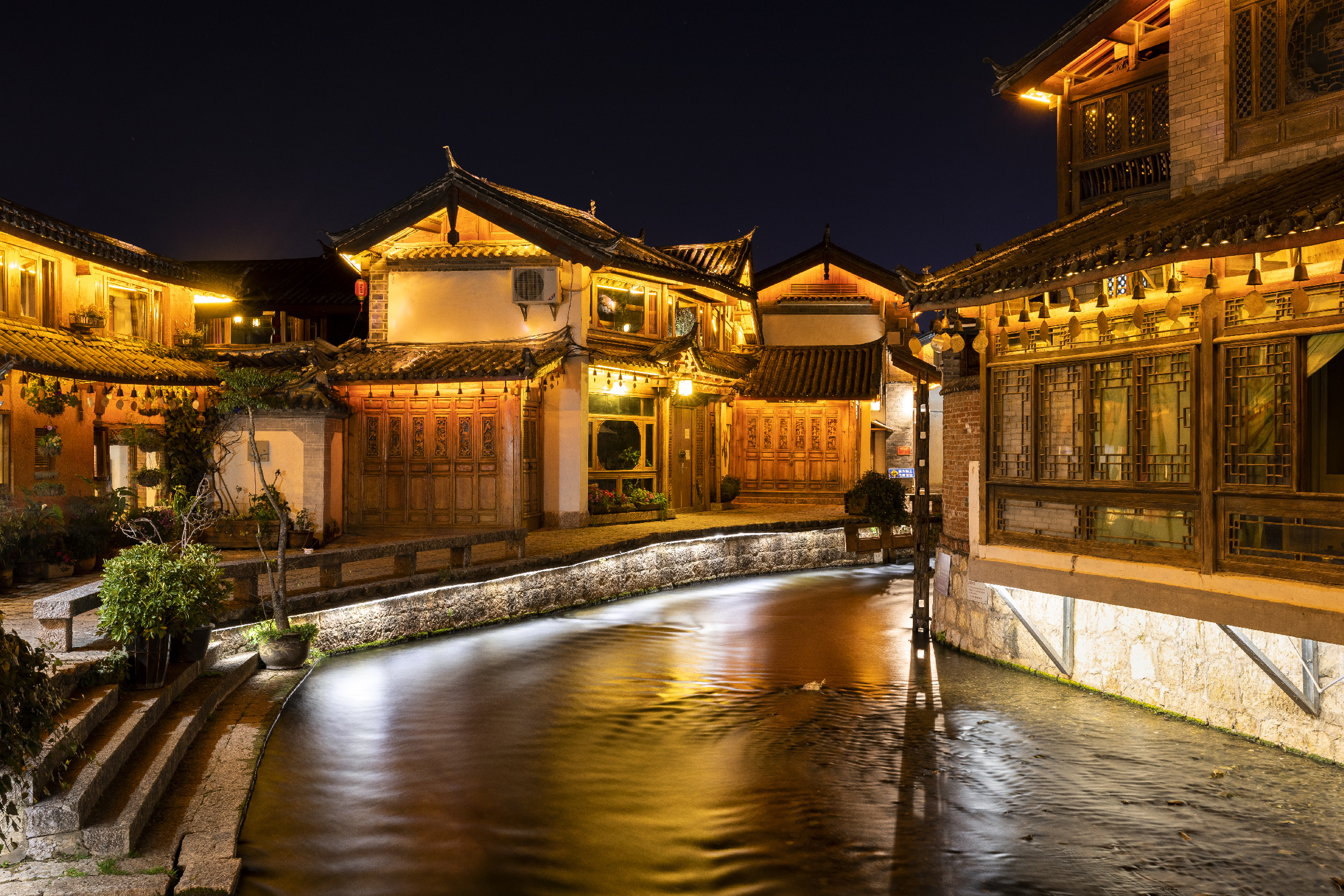



Tiger Leaping Gorge
Named for an adventurous tiger who is said to have jumped the 25-metre gap across the gorge to escape a hunter, Tiger Leaping Gorge is one of the world’s deepest river canyons. The scenery is spectacular – snow-capped mountains rise 3,790 meters above sea level, soaring high above a rushing Jinsha River, a tributary of the Yangtze. Hiking along the canyon is popular, with guesthouses along the way that are a good source of income for the Naxi people who carry on their traditional way of life here.
roughguides.com
Unfortunately you won’t see much of a hike here. We failed at finding a nice trail and no one in the area seemed to have a clue about where the nice paths were. As a general rule in China though, don’t expect to walk too much, they’ll make sure it won’t happen!
Instead, enjoy the sun and meditate:



The next morning, the sunrise over the mountains was pretty spectacular.







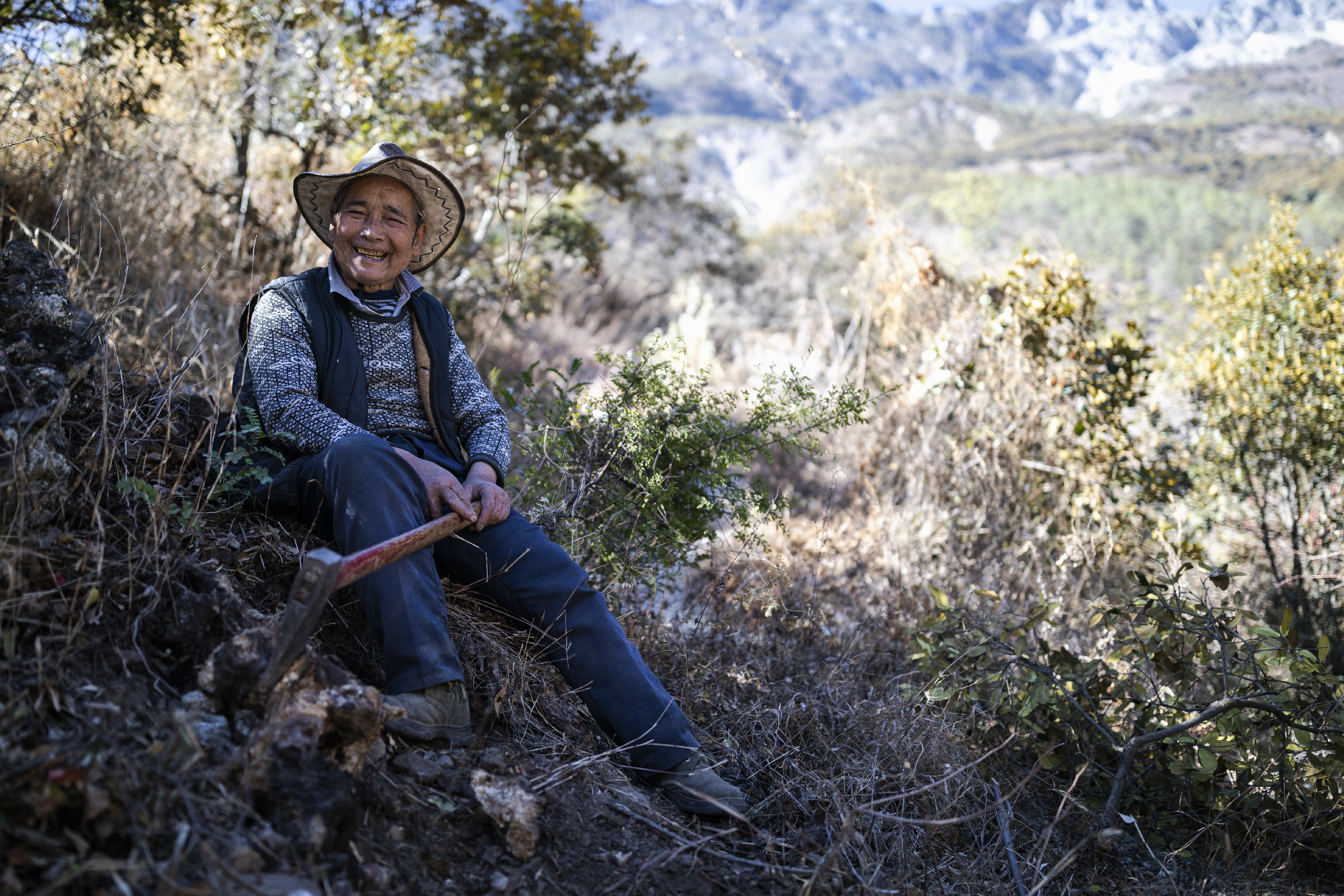

Shaxi
Shaxi was one of my favorite smalls town in Yunnan. It was beautiful and everything, from the general architecture of the town to the small stores and coffee shops, showed a clear attention to details and an interest for craftsmanship.
Shaxi (Chinese: 沙溪) is a historic market town in Jianchuan County, Dali Prefecture, Yunnan province, China. It is located roughly halfway between Dali and Lijiang.
The Sideng market square of Shaxi was added to the World Monuments Watch List of 100 Most Endangered Sites in 2001.
Shaxi started as a trading point for tea and horses during the Tang Dynasty (618 – 907). The prosperity of the town was at its height during the Ming and Qing dynasties (1368–1912).
It is probably the most intact horse caravan town on the Ancient tea route leading from Yunnan into Burma and Tibet.
The two main ethnic groups of Shaxi are the Bai and Yi people.
Wikipedia.com






The following photo shows a Tibetan artist in Shaxi. The paintings behind him are thangka’s.
The thangka, a Tibetan painting using ground mineral pigment on cotton or silk, functions as one of the principle meditational tools in Buddhist practice.
A thangka usually depicts a central Buddhist deity or teacher surrounded by associated gods and lineage figures, describes events or myths attributed to important religious teachers, or outlines the blueprint of a particular deity’s realm as a mandala. The viewer accrues merit and makes spiritual progress by meditating on the iconographic imagery associated with the particular Buddhist teaching.
christies.com

The deities depicted his paintings are Tara’s:
Buddhist saviour-goddess with numerous forms, widely popular in Nepal, Tibet, and Mongolia. She is the feminine counterpart of the bodhisattva (“buddha-to-be”) Avalokiteshvara. According to popular belief, she came into existence from a tear of Avalokiteshvara, which fell to the ground and formed a lake. Out of its waters rose up a lotus, which, on opening, revealed the goddess.
The White Tara (Sanskrit: Sitatara; Tibetan: Sgrol-dkar) was incarnated as the Chinese princess. She symbolizes purity and is often represented standing at the right hand of her consort, Avalokiteshvara, or seated with legs crossed, holding a full-blown lotus. She is known for compassion, long life, healing and serenity.
The Green Tara (Sanskrit: Shyamatara; Tibetan: Sgrol-ljang) was believed to be incarnated as the Nepali princess. She is considered by some to be the original Tara and is the female consort of Amoghasiddhi (see Dhyani-Buddha), one of the “self-born” buddhas.
Green Tara is usually depicted as a compassionate being ready to step down from her lotus throne to offer comfort and protection from all of the sufferings we experience in the world. She offers protection from fear and the following eight obscurations: lions (= pride), wild elephants (= delusion/ignorance), fires (= hatred and anger), snakes (= jealousy), bandits and thieves (= wrong views, including fanatical views), bondage (= avarice and miserliness), floods (= desire and attachment), and evil spirits and demons (= deluded doubts).
britannica.com and yowangdu.com
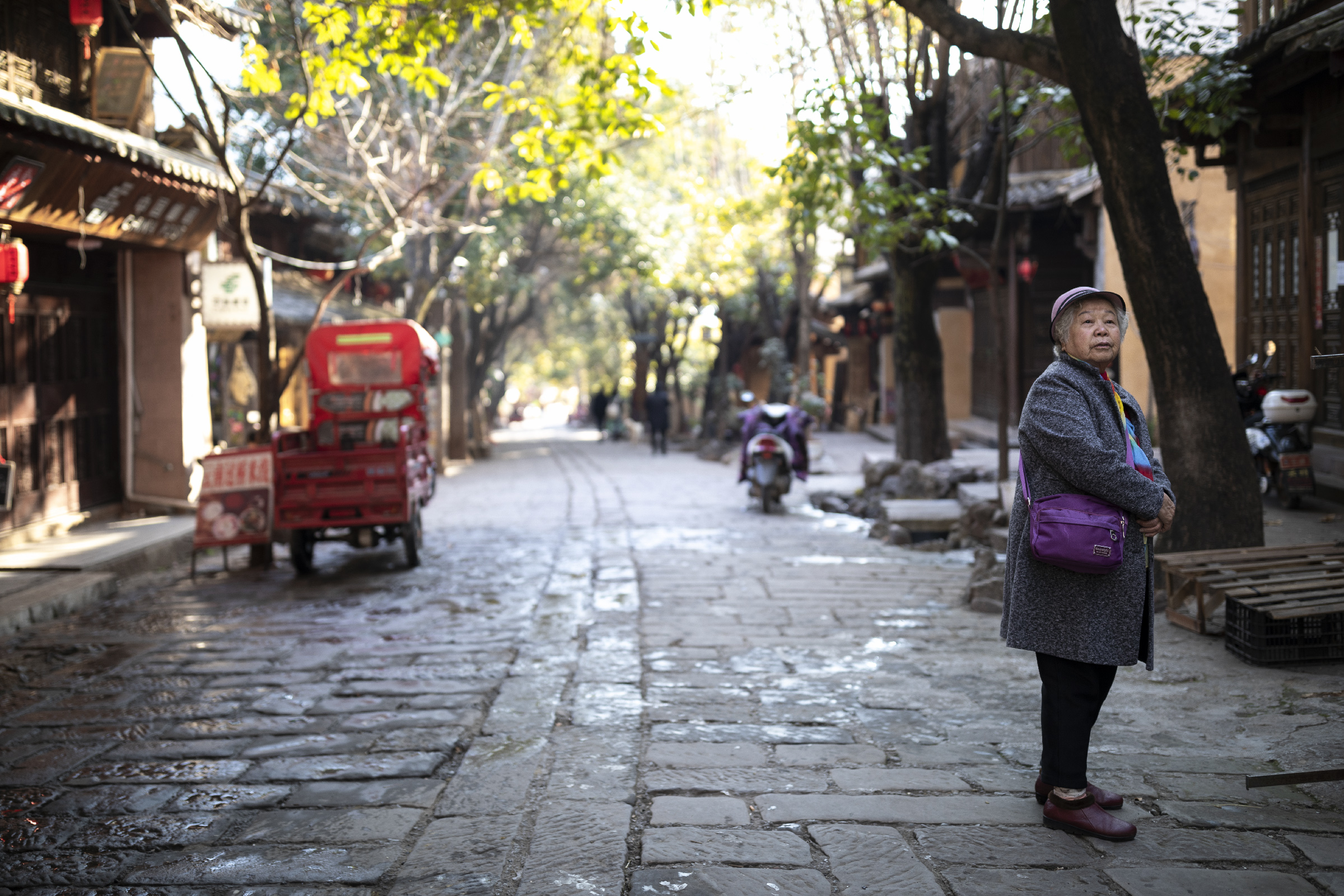

Shibaoshan
Tourist trap? Monkey trap that is for sure! Not far from Shaxi is the Shibaoshan mountain, where you can see a few temples and a large number of hungry monkeys who’ll take any opportunity to steal your food. A place worth skipping even though we still managed to make it photo-worthy :).


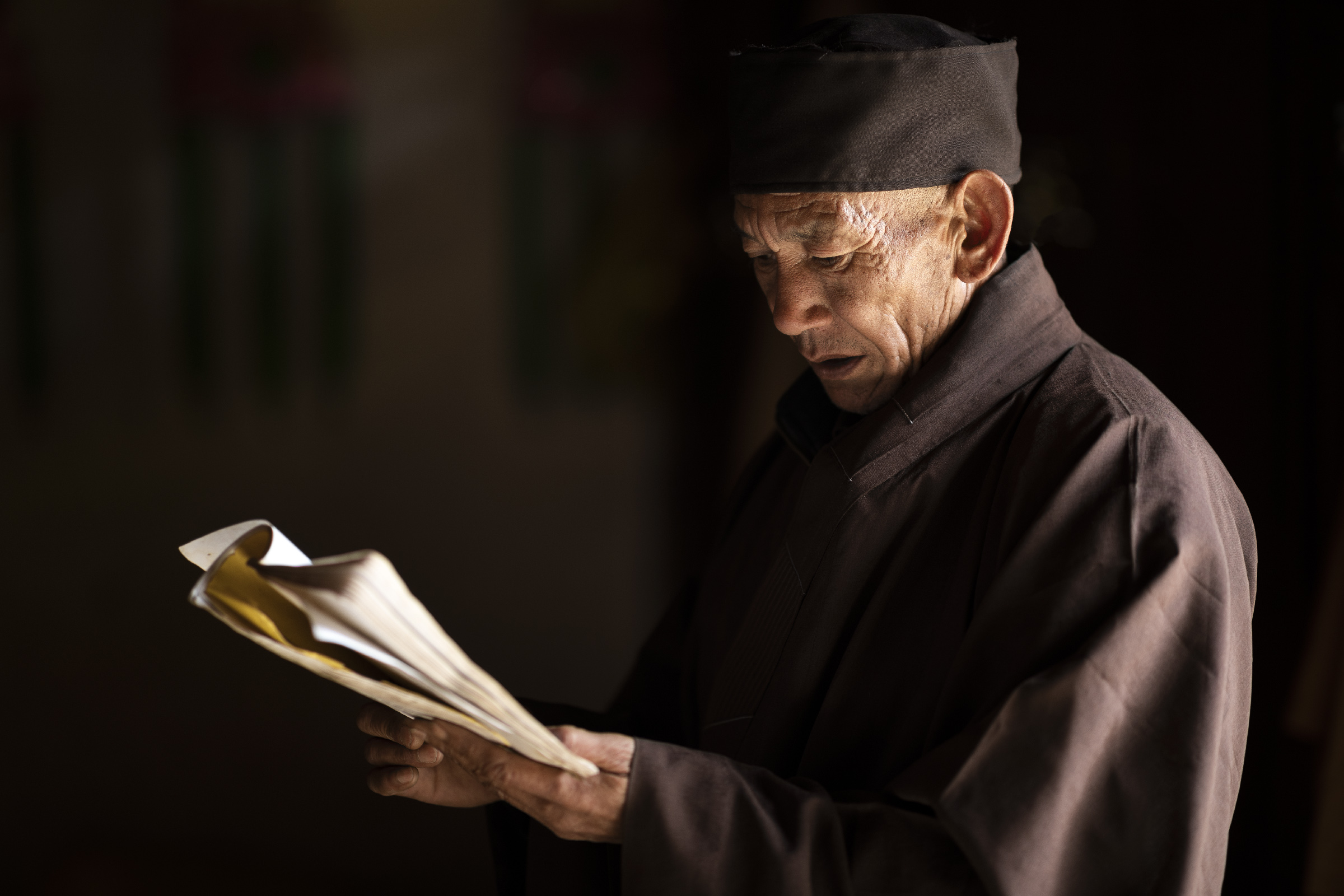
Enough of those all Buddhist traditions. Meet Ricardo Fayet, aka the world’s top expert in neo-buddhism. Get in touch if you’d like to help us spread the word — we think we’re onto something big that could revolutionize tourism in China.

Dali Old Town
Dali City, formerly known as Tali, has traditionally been an important centre on the routes westward from Kunming (the provincial capital) to the Tibet Autonomous Region and northern Myanmar (Burma).
The contemporary city has remained a collecting point for cotton, tea, grain, sugar, pears, walnuts, and ham, as well as for fish from Lake Er; these products are mainly for shipment to Kunming.
britannica.com
Dali was another touristy town that didn’t feel authentic at all. The following photo sums it all up.


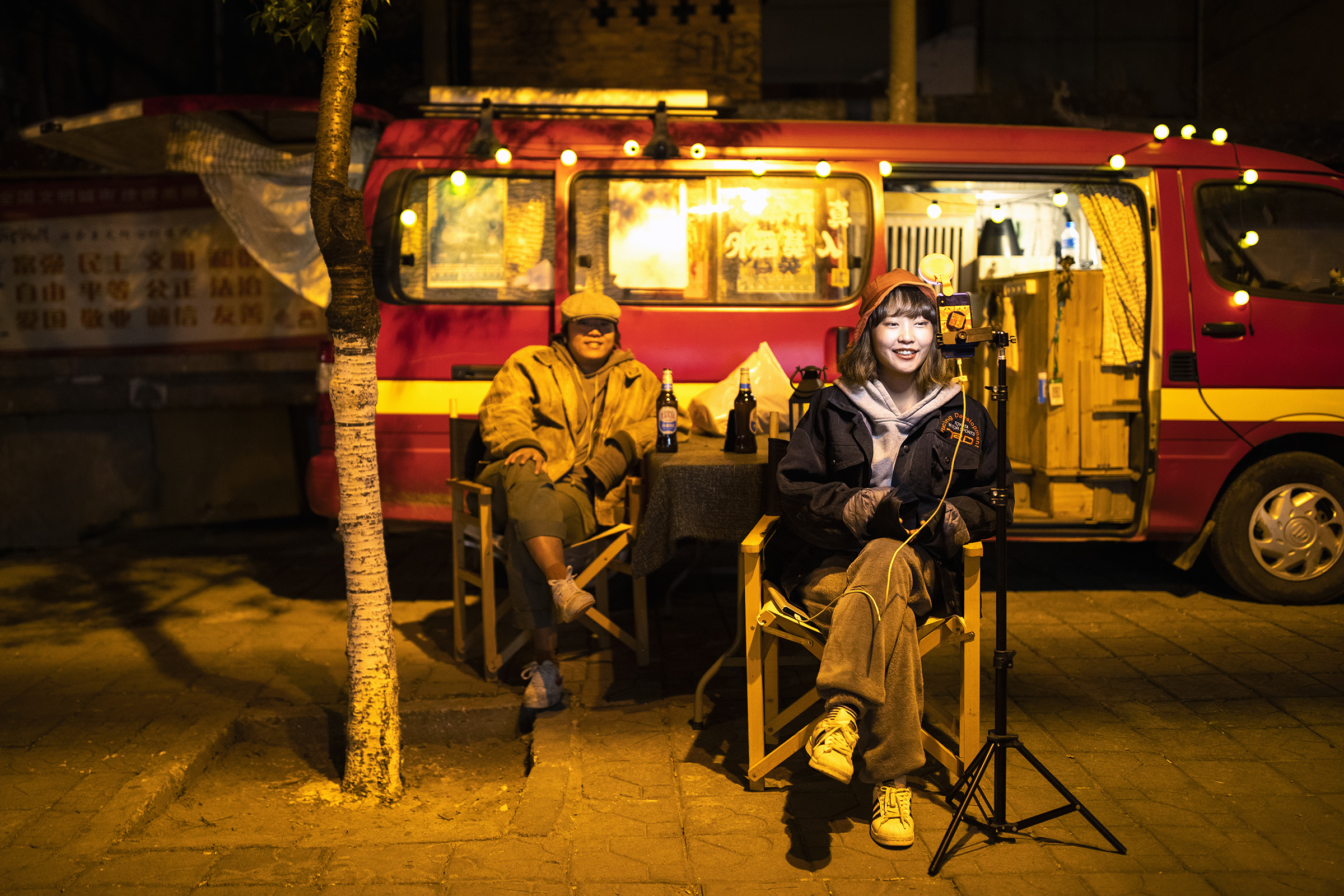
The Three Pagodas and the Chongsheng Temple
Outside of the old town of Dali, the Three Pagodas of the Chongsheng Temple (Chinese: 崇圣寺三塔; pinyin: Chóngshèng Sì Sāntǎ) are an ensemble of three independent pagodas arranged on the corners of an equilateral triangle, dating from the time of the Kingdom of Nanzhao and Kingdom of Dali in the 9th and 10th centuries (Wikipedia).


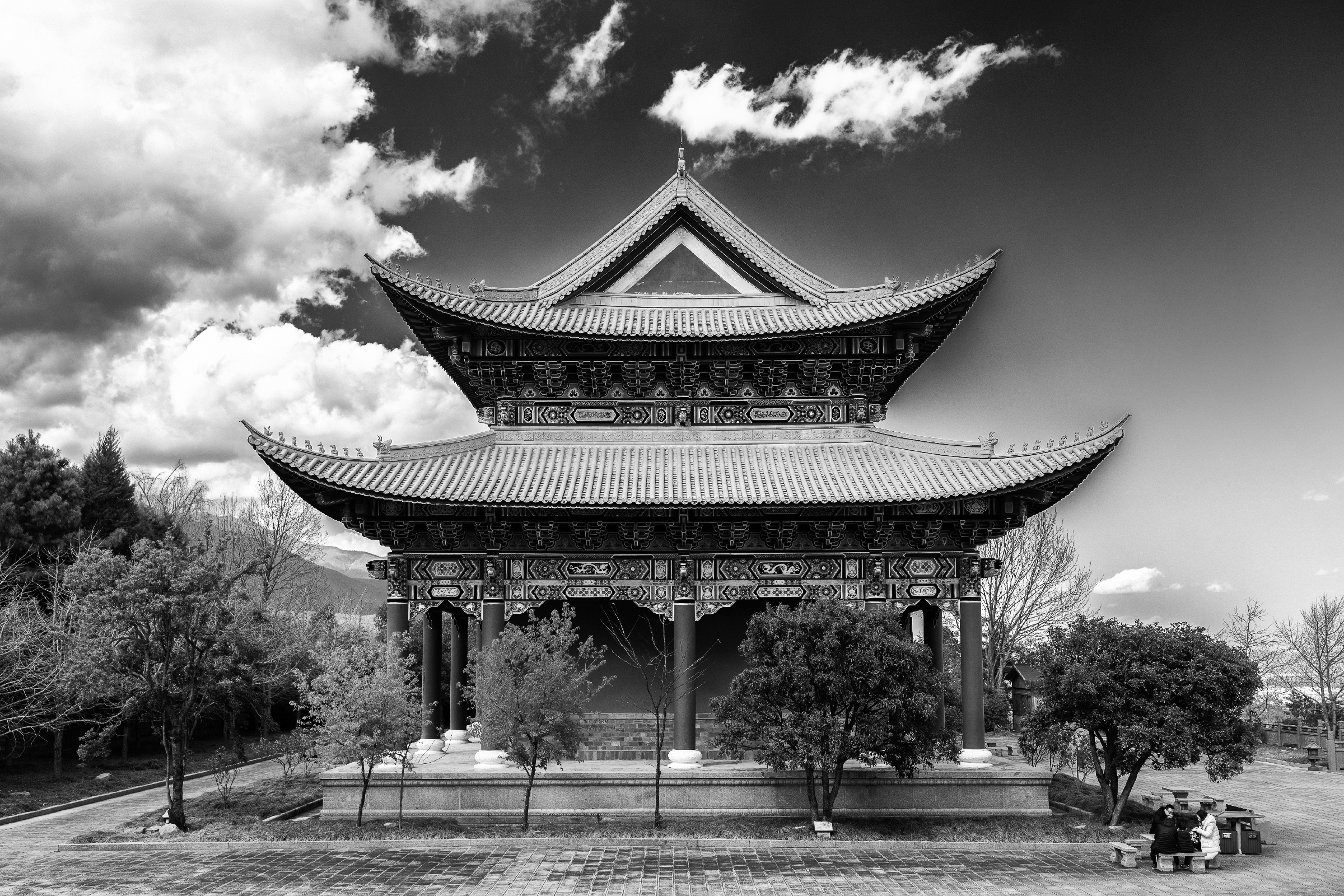

Weishan old town







Stone Forest
The Stone Forest or Shilin (Chinese: 石林; pinyin: Shílín) is a notable set of limestone formations of about 500 km2 located in Shilin Yi Autonomous County. The tall rocks seem to arise from the ground in a manner somewhat reminiscent of stalagmites, or with many looking like petrified trees, thereby creating the illusion of a forest made of stone. (Wikipedia)
While I still managed to get one interesting image out of it, it was again ridiculously touristy. I won’t post videos of it as it’s really off-putting.
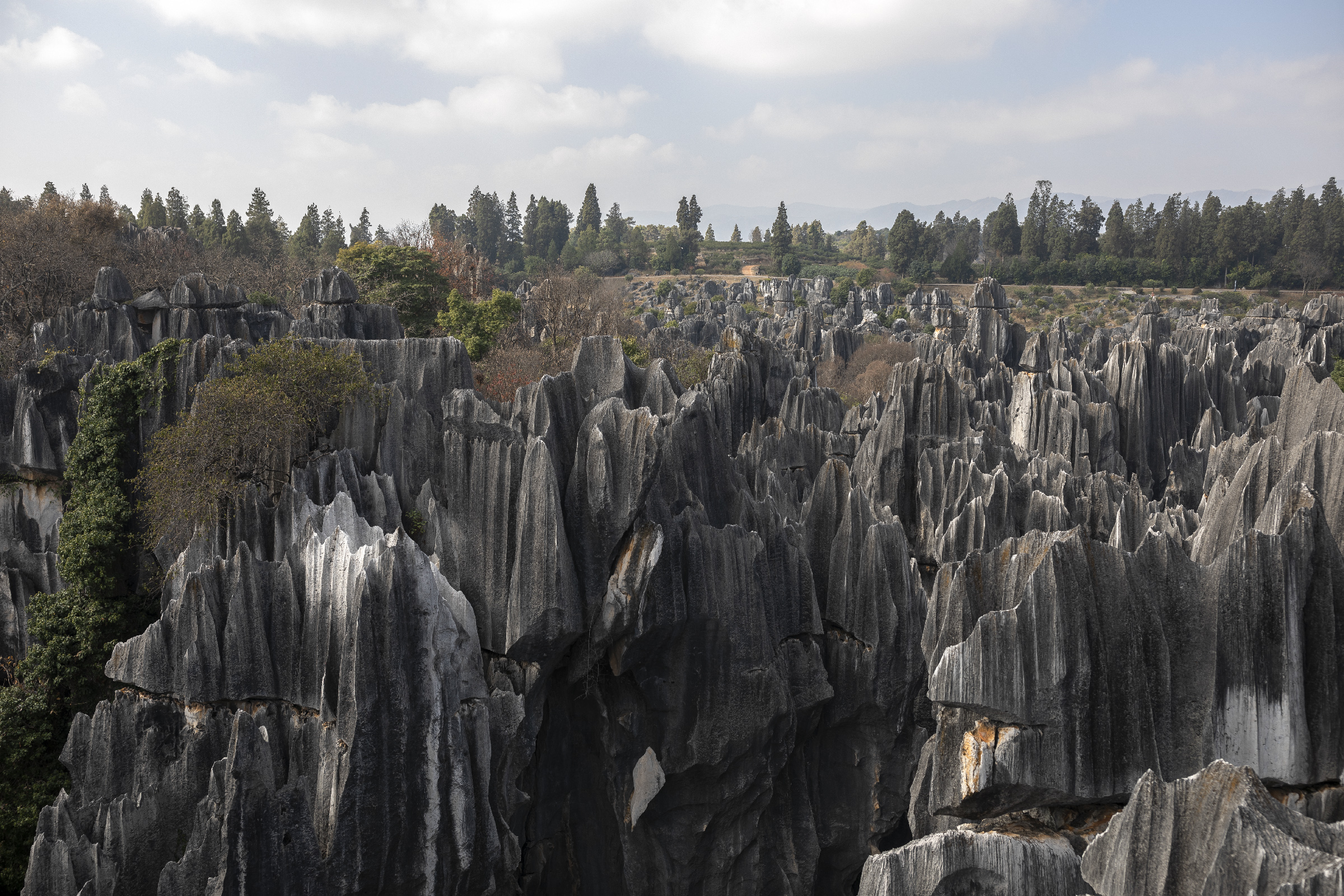
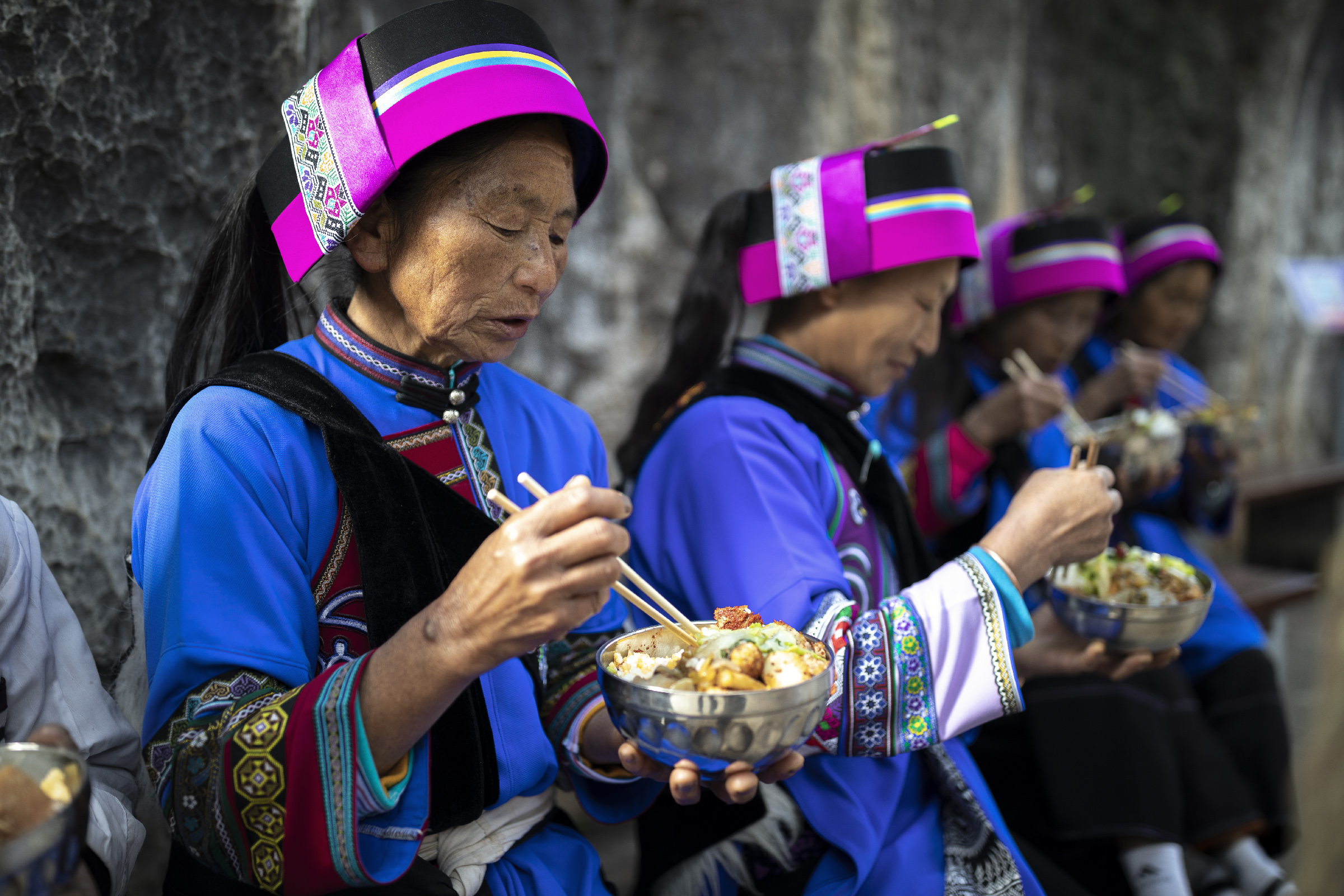
Don’t worry, some of the things following in this post are a bit more positive. I just wouldn’t lie to you guys as you’ve gone this far reading my nonsense :).
Double Dragon Bridge, Jianshui Tuanshan
We were lucky to get there for sunset, a worthy stop in this trip.




Jianshui and the Confucius Temple
One of the highlights of the trip — a truly beautiful place on a peaceful morning.
Jianshui’s most famous temple was modeled after the temple in Confucius’ hometown of Qufu (Shandong province) and finished in 1285. It covers 7.5 hectares and is the third-largest Confucian temple in China. The temple operated as a school for nearly 750 years – its academic credentials were such that more than half of all Yunnan’s successful candidates in imperial examinations during this period came from Jianshui.
lonelyplanet.com

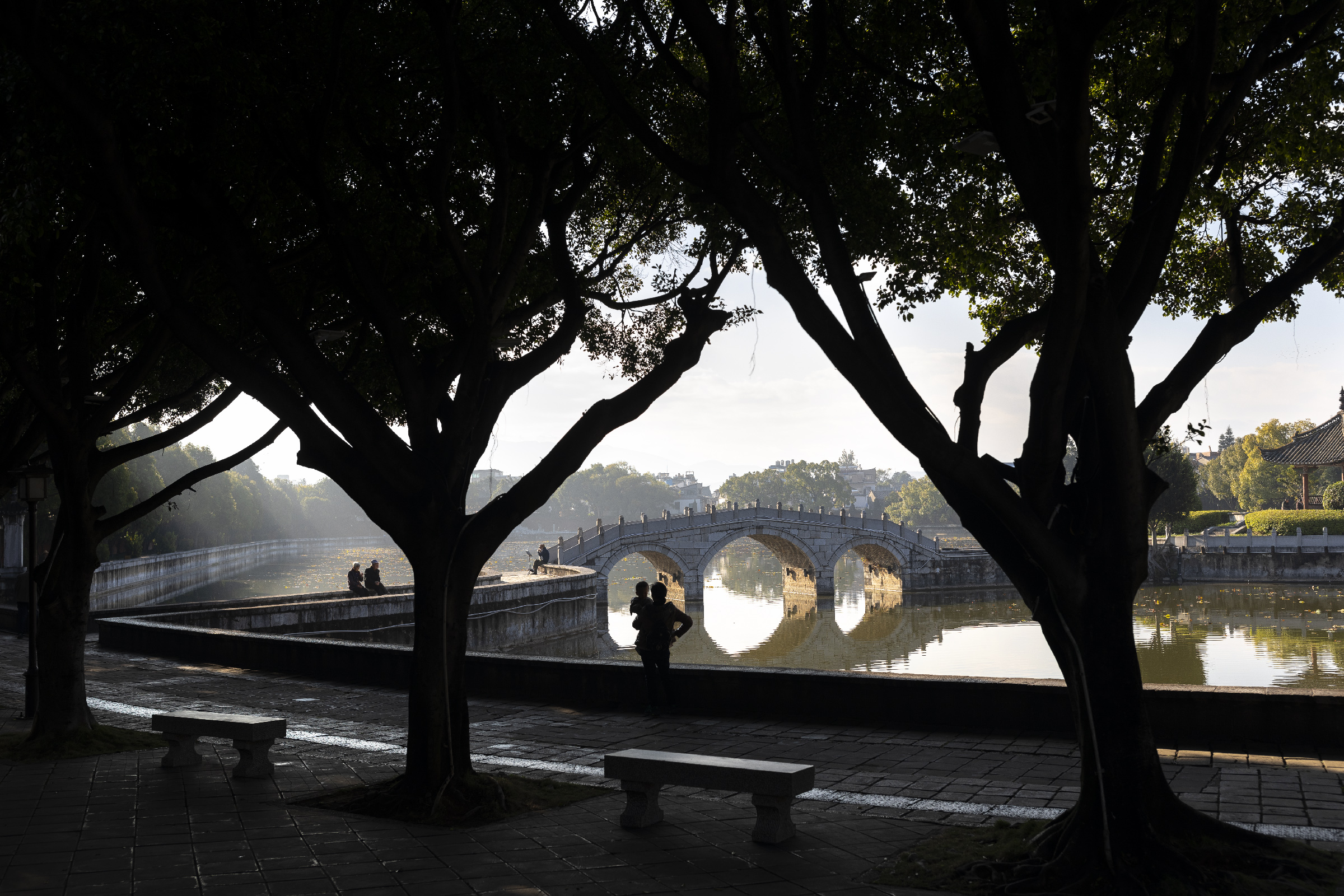

Yuanyang rice terraces
If you look for those on Instagram, you will see a number of colorful rices terraces with beautiful reflections from the sky. While you might get lucky enough to actually see that, you will have to deal with hordes of tourists all fighting for the best photo spot. Traveling there also takes pretty much a full day so while it might make your Instagram look better, I’d recommend skipping this place altogether.



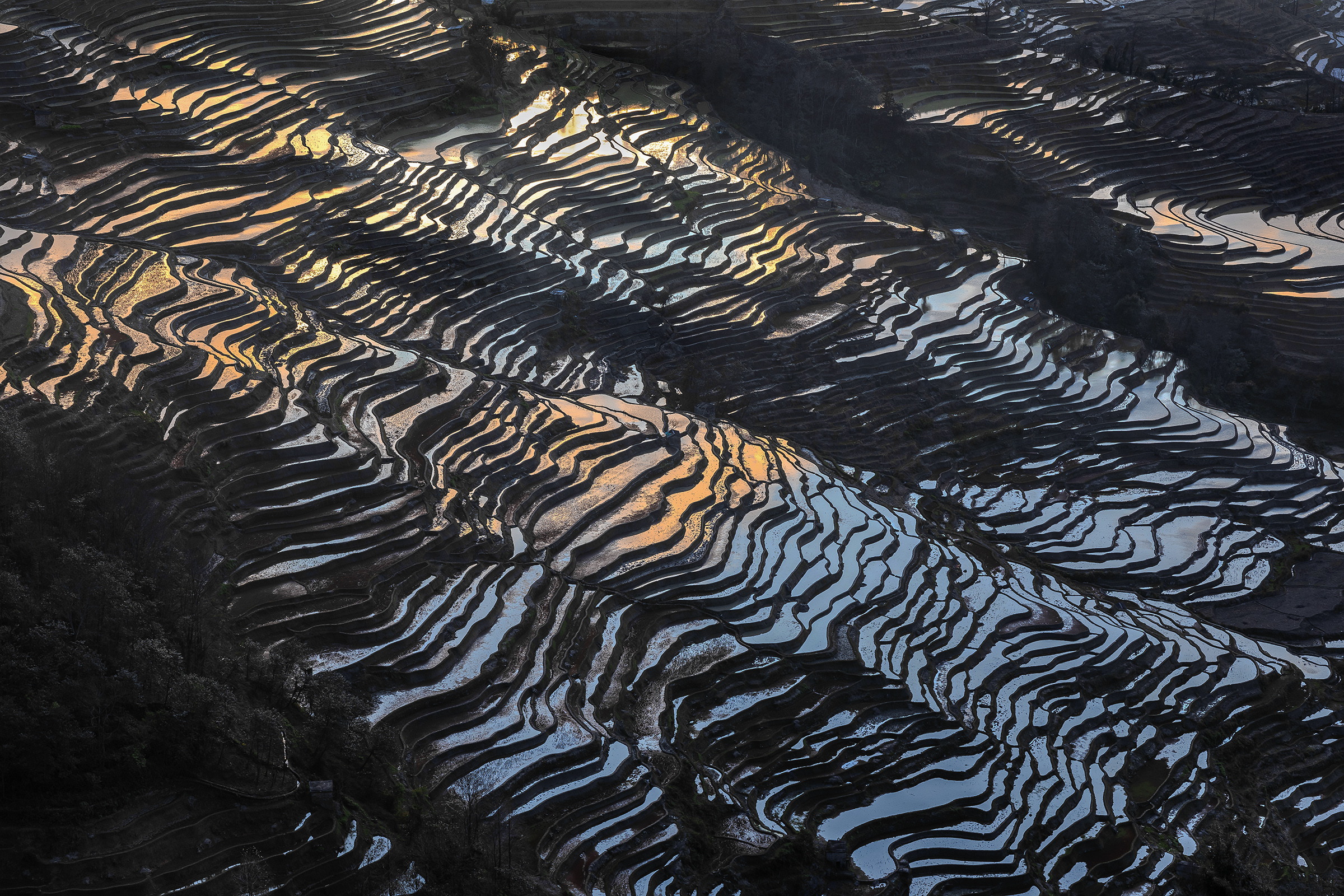
And that’s it! Sorry I couldn’t be more positive about China; a number of times during this trip I thought to myself “this is the Great Chinese Hoax, again.” China has been terrible at developing tourism and preserving any kind of authenticity in Yunnan. Not everything has been denaturalized yet, but it’s only a matter of time.
If you skip places like Dali, the Stone forest or Yuanyang rice terraces, you may have a more enjoyable time there. We were likely overly ambitious and misinformed about travel times and how touristy most places would be, which made the trip quite tiring — don’t make the same mistakes!
If you missed the other two posts about China:
Thanks for reading… until next time!
magnifique:bravo!